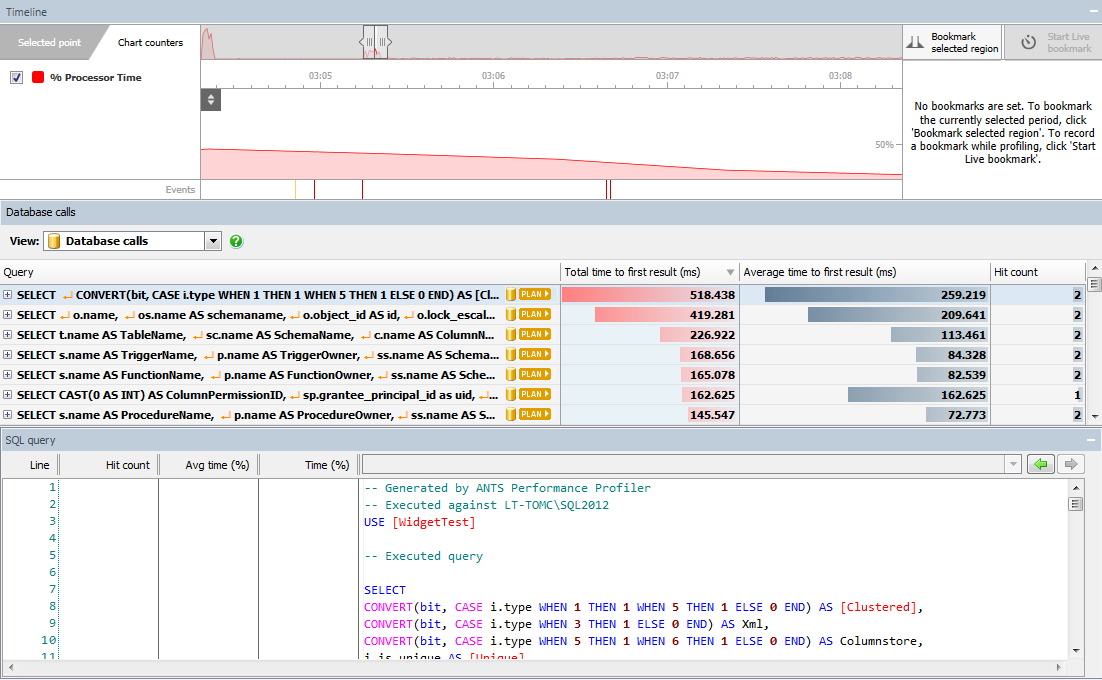The database calls view
Published 14 May 2018
Database calls view is only available in ANTS Performance Profiler Professional edition.
Database call performance data is not recorded when profiling in sampling mode.
The Database calls view shows performance data for all the SQL queries your application made during the time period you've selected.
Queries that are run multiple times are grouped together. To see all the queries in a group, click .
The following data is shown for each query, for the time period you have selected:
- Query: The first line of the database query (excluding any initial blank lines). To see the full query text, move your mouse pointer over the row.
- Total time to first result (ms): The time taken (in milliseconds) until the query returned its first result.
Where a call was made multiple times, this is the sum of the time to return a first result taken by all instances of the call. - Average time to first result (ms): The time taken (in milliseconds) until the query returned its first result.
Where a call was made multiple times, this is the average time taken for each instance of the call to return the first result. - Hit count: The number of times the call was made.
When a query is selected, a yellow highlight on the timeline shows the period when the call was running. Source code for the selected query is shown below the list of queries, in the SQL query pane.
Query parameters
If a query is run with parameters, parameter names and values are shown in the Query list.
When you select a query, the SQL query pane includes DECLARE statements showing parameter names and values. Size, scale and precision are shown if available.
Values aren’t shown:
- for binary, varbinary, image, timestamp, udt, and structured data types
- if the value is greater than 8000 bytes
Creating an execution plan diagram
You can use ANTS Performance Profiler to create execution plan diagrams for the SQL calls made by your application.
To create an execution plan diagram for a query, select the query and click .
For more information about execution plans, see The execution plan diagram.
Linking back to your code
To find out which of your code's methods ran a particular SQL query:
- In Database calls view, select the query.
A icon appears on the right-hand side of the Query column.
- Click on the icon.
The display switches to the call tree, with the SQL query selected.
You can scroll up the call tree to locate the query's .NET parent, and browse its timings to determine if the problem is the way the query is called.
For more information about .NET method timings, see The call tree.







